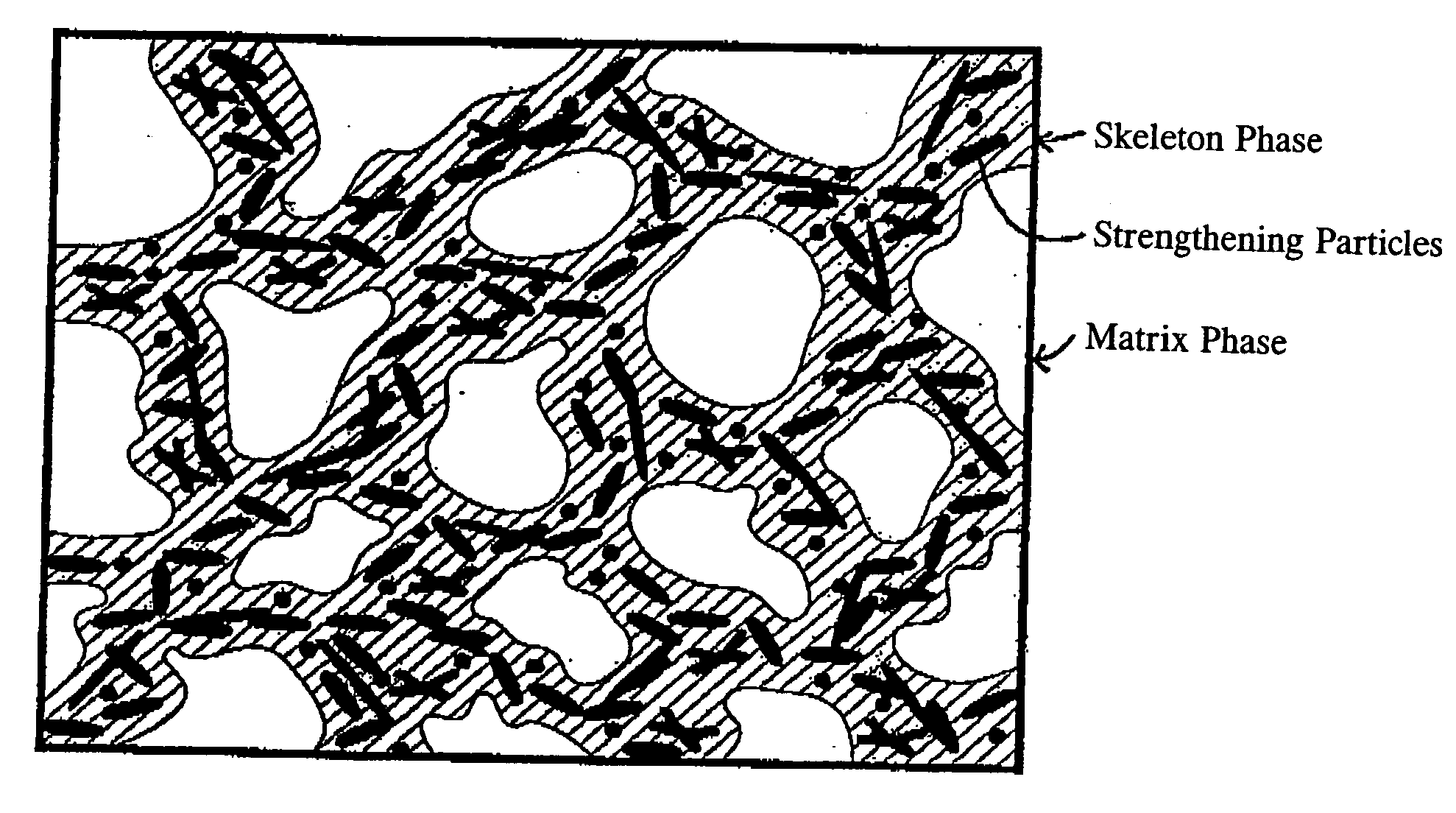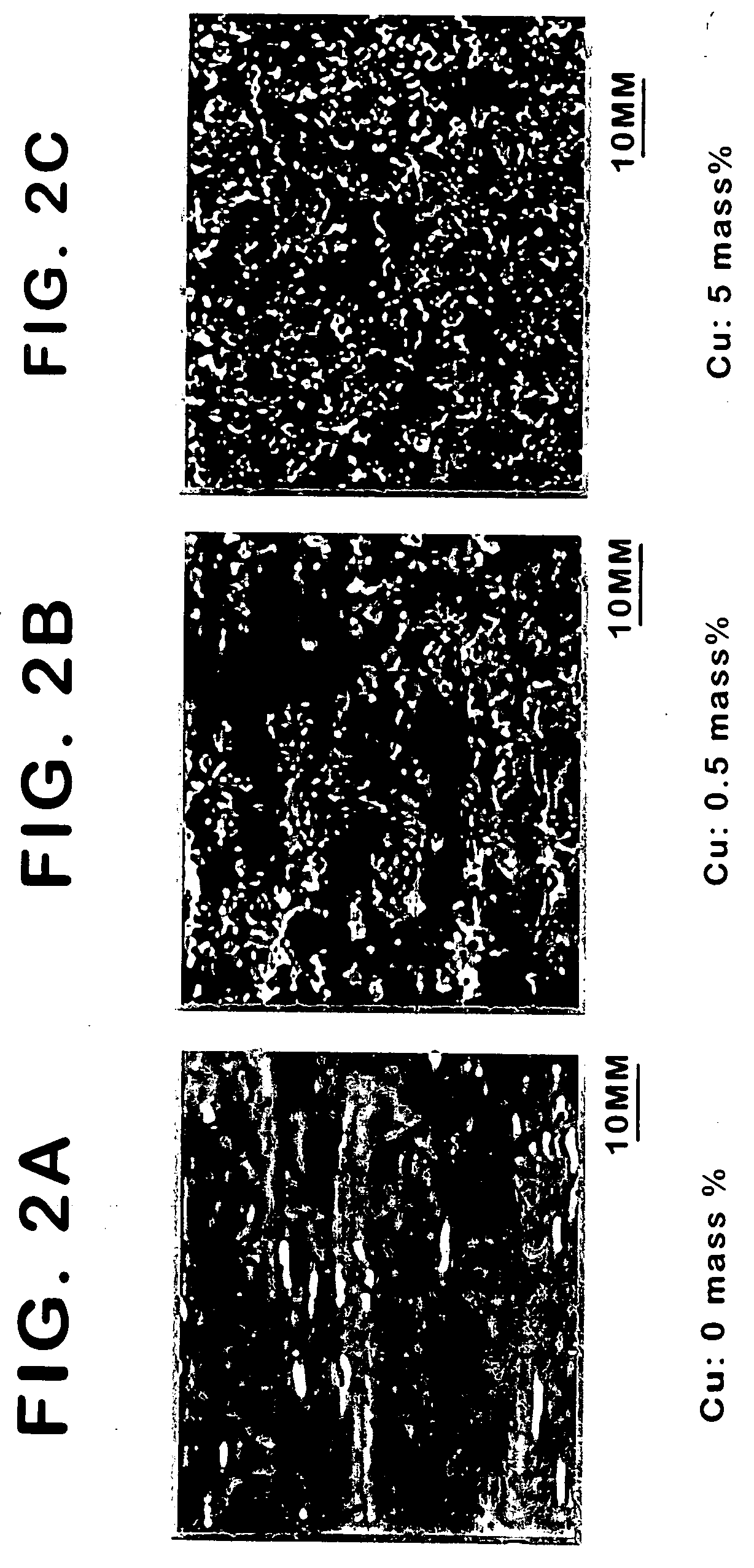Aluminum alloys for casting, aluminum alloy castings and manufacturing method thereof
- Summary
- Abstract
- Description
- Claims
- Application Information
AI Technical Summary
Benefits of technology
Problems solved by technology
Method used
Image
Examples
example 1
(1) Production of Test Pieces
[0061] After preparing molten metal by melting various aluminum alloys of different compositions as shown in table 1, it was poured into a mold for preparing the JIS No. 4 test pieces, left for natural cooling and solidification (casting process). The casting thus obtained was then heated at 530° C. for 5.5 hours and water quenched in a warm water of 50° C. as a solution heat treatment. After this treatment, the casting was further subjected to aging by heating at 160° C. for 5 hours. From the heat treated casting, thermo-mechanical fatigue test pieces No. 1-1 through 1-8 each having a parallel area of 4 mm diameter×6 mm length as shown in Table 1 were produced.
(2) Evaluation of Thermo-Mechanical Fatigue Resistance
[0062] The thermo-mechanical fatigue resistance of each test piece was evaluated as follows.
[0063] Each of the test pieces described above was mounted on the restraint holder made of a low thermal expansion alloy and subjected to a repeti...
example 2
[0067] Test pieces No. 2-1 through 2-6 were prepared as shown in Table 2 using the aluminum alloys for casting of different compositions in a similar manner as in Embodiment No. 1. These test pieces have different amount of Mg.
[0068] Hardness of the test pieces was measured and the hardness measurement was conducted using a Vickers Hardness Tester or a Micro Vickers Hardness Tester. The “Total Mean Hardness”, shown in Table 2, was measured by creating a large indentation with a load of 10 kgf and a loading time of 30 sec and represents a mean hardness of the entire test piece. The “Initial Hardness of Matrix Phase” was measured by creating a small indentation in the center of the matrix phase with a load of 100 g and a loading time of 30 sec on the test piece prior to heating. The “Hardness of Matrix Phase after Heating” is the hardness of the matrix after heating it at 250° C. for 100 hr and is measured in a similar manner as the “Initial Hardness of Matrix Phase” mentioned above....
example 3
[0074] Test pieces No. 3-1 through 3-3 were prepared as shown in Table 3 using different compositions of the aluminum alloys for casting as in Example 1. These test pieces have different Cu contents.
[0075] A salt water spraying test was applied to these test pieces and the corrosion resistance characteristics of these test pieces are evaluated. The salt water spraying test was conducted in accordance with JIS Z2371-1994 for 100 hours, maintaining the salt water concentration to 5% and the temperature of the spraying salt water to 35° C. The surfaces of the test pieces were polished prior to the test using #600 water resistant grinding paper.
[0076] FIGS. 2 (a)-2(c) show surface photographs of test pieces No. 3-1 through No. 3-3 washed after the salt water spraying test. It can be seen that the test pieces with higher Cu contents are corroded severely, while almost no corrosions exist in the test pieces with low Cu contents. Test piece No. 3-1, which contains less that 0.2 mass % of...
PUM
| Property | Measurement | Unit |
|---|---|---|
| Percent by mass | aaaaa | aaaaa |
| Percent by mass | aaaaa | aaaaa |
| Percent by mass | aaaaa | aaaaa |
Abstract
Description
Claims
Application Information
 Login to View More
Login to View More - R&D
- Intellectual Property
- Life Sciences
- Materials
- Tech Scout
- Unparalleled Data Quality
- Higher Quality Content
- 60% Fewer Hallucinations
Browse by: Latest US Patents, China's latest patents, Technical Efficacy Thesaurus, Application Domain, Technology Topic, Popular Technical Reports.
© 2025 PatSnap. All rights reserved.Legal|Privacy policy|Modern Slavery Act Transparency Statement|Sitemap|About US| Contact US: help@patsnap.com



